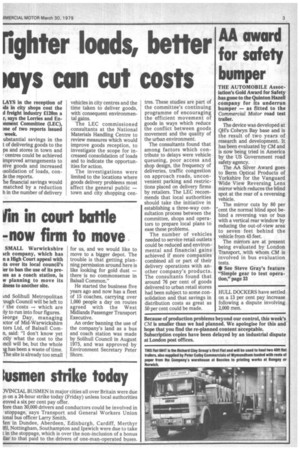Fighter loads, better pays can cut costs
Page 5

If you've noticed an error in this article please click here to report it so we can fix it.
LAYS in the reception of ods in city shops cost the d freight industry £120m a r, says the Lorries and Ennunent Committee (LEC), Dne of two reports issued . week.
ubstantial savings in the t of delivering goods to the ,ps and stores in town and centres could be achieved improved arrangements to eive goods and increased isolidation of loads, conie the reports.
he financial savings would matched by a reduction h in the number of delivery vehicles in city centres and the time taken to deliver goods, with consequent environmental gains.
The LEC commissioned consultants at the National Materials Handling Centre to review measures which would improve goods reception, to investigate the scope for increased consolidation of loads and to indicate the opportunities for action.
The investigations were limited to the locations where goods delivery problems most affect the general public — town and city shopping cen tres. These studies are part of the committee's continuing programme of encouraging the efficient movement of goods in ways which reduce the conflict between goods movement and the quality of the urban environment.
The consultants found that among factors which contribute to delays were vehicle queueing, poor access and shop design, the frequency of deliveries, traffic congestion on approach roads, unconvenient parking and restrictions placed on delivery firms by retailers. The LEC recommends that local authorities should take the initiative in establishing a three-way consultation process between the committee, shops and operators to prepare local plans to ease these problems.
The number of vehicles needed to service retail outlets could be reduced and environmental and financial gains achieved if more companies combined all or part of their delivery operations with another company's products. The consultants found that around 76 per cent of goods delivered to urban retail stores had been subject to some consolidation and that savings in distribution costs as great as 50 per cent could be made.
























































































